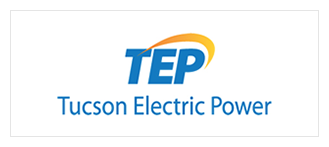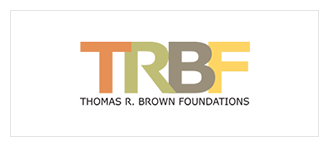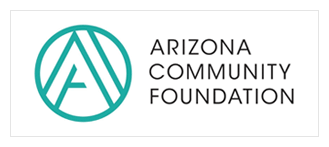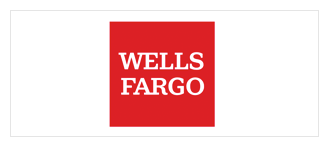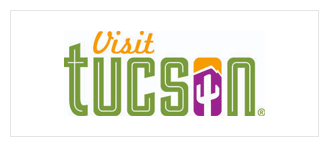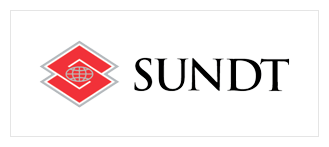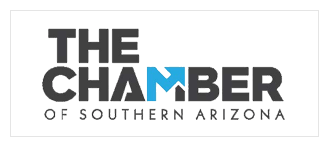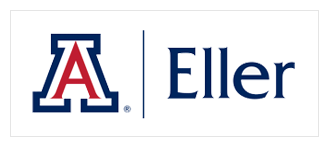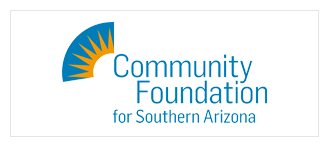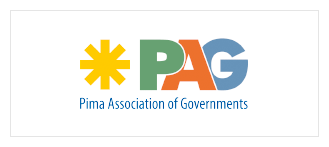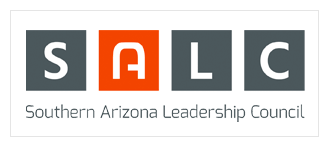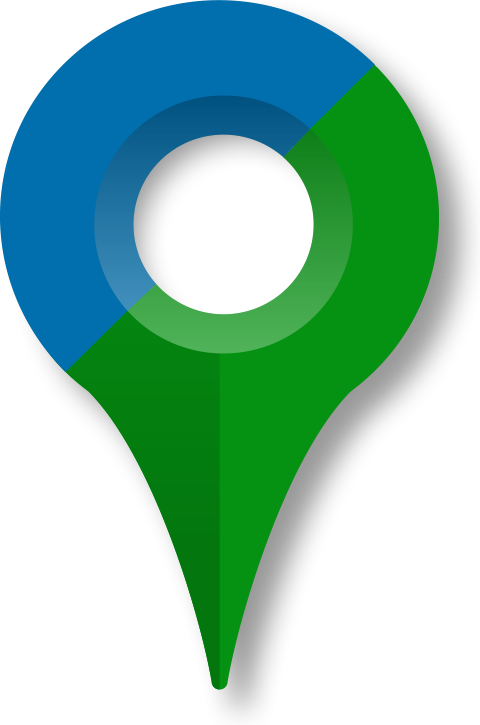 Examine Data on Internet Access in Tucson, Arizona MSA
Examine Data on Internet Access in Tucson, Arizona MSA
How are we doing?
Percent of Households with Broadband Internet (2023)
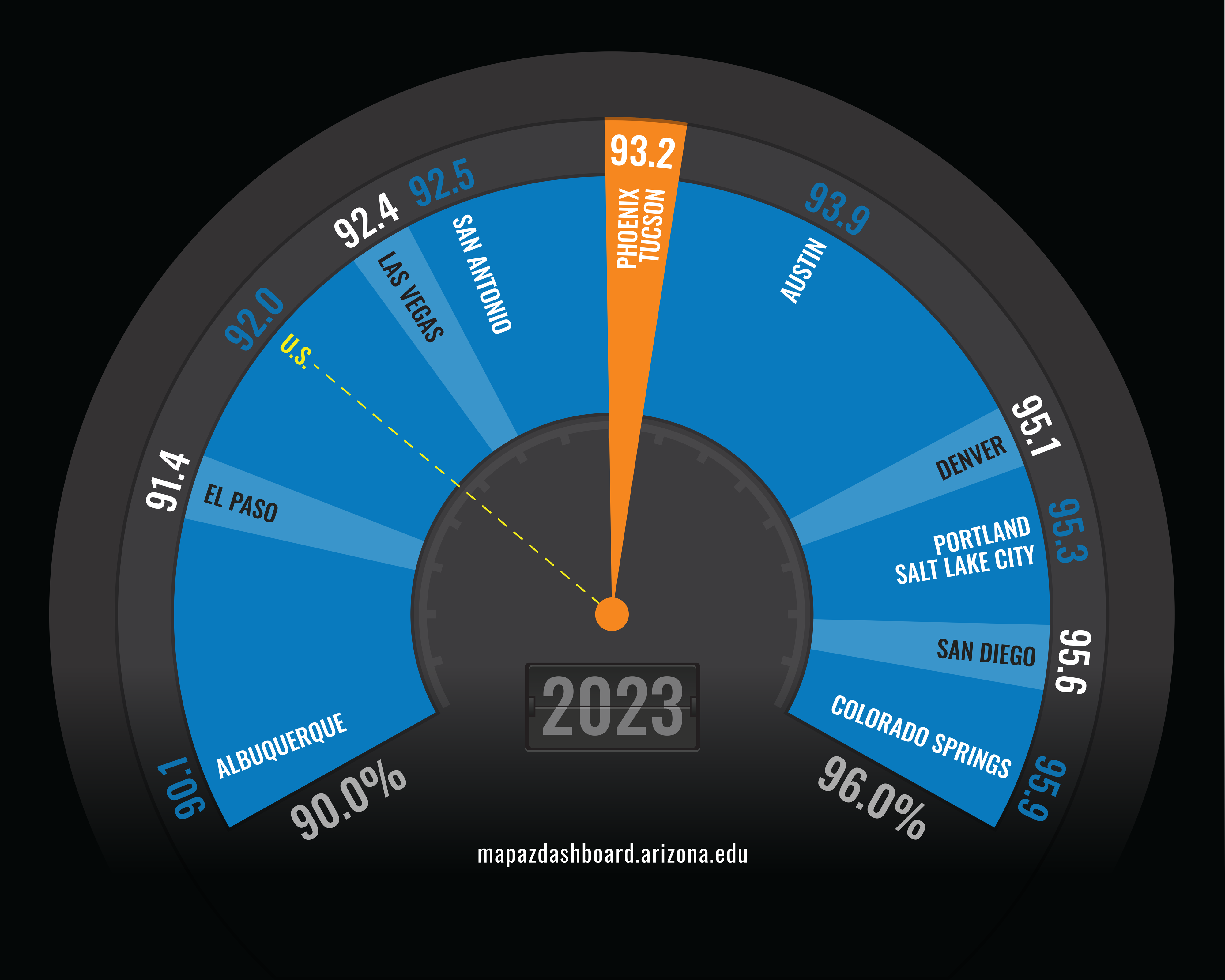
In 2023, the percentage of households with broadband internet access in the Tucson Metropolitan Statistical Area (MSA) was 93.2%, placing it seventh, along with Phoenix. Among the 12 MSAs tracked on the MAP, Albuquerque ranked last at 90.1%, while Colorado Springs had the highest rate at 95.9%. In 2023, the percentage of U.S. households with broadband internet access was 92.0%.
Why is it important?
In the span of a generation, home computers and internet access have gone from novelties to necessities. Technology is now an integral part of our everyday lives. It is pervasive throughout how we do business and interact with companies (such as online banking), and each other (such as social media). While most U.S. households have online access through internet/broadband services, there are still those who do not – for reasons of availability, cost, or personal preference. The use of smartphones and tablets has supplemented, and in some cases surpassed the use of home computers. The availability and affordability of individuals to access online resources is an important consideration, especially with the increase in work-from-home rates.
How do we compare?
High-speed internet access is available in all MSAs tracked on the MAP Dashboard. The Federal Communications Commission (FCC) increased its definition of high-speed broadband in 2024 to a download speed of at least 100 megabits per second (Mbps) and an upload speed of at least 20 Mbps. Albuquerque is the only MSA tracked on the MAP Dashboard that does not have 100% coverage at this speed. However, their coverage rate as of December 2023 was 99.9%. According to the FCC, a broadband speed of 100/20 Mbps would be considered good for most households, allowing for streaming HD videos on multiple devices, gaming, video calls, downloading large files, and web use by multiple users simultaneously.
The FCC reports residential broadband availability at varying speeds. The first speed at which we see variation among the MSAs is 250/25 Mbps. That speed would be considered very good for households with multiple users (3-4) who want quicker download speeds and high-quality streaming and video calls on simultaneous devices. The Las Vegas MSA reported the highest coverage of 250/25 Mbps broadband at 98.9% in 2023, while Austin reported the lowest at 89.5%. All the western MSAs tracked reported coverage rates of 250/25 Mbps higher than the nation (88.9%).
In 2023, the variation in broadband coverage at the 1000/10 Mbps speed was significant between the MSAs. A broadband speed of 1000/10 Mbps is ideal for a very large household that requires fast download speeds for multiple users simultaneously. Salt Lake City reported the highest coverage at this speed at 82.9%. The Tucson MSA had the second-lowest coverage at 33.5%, ahead of Albuquerque at 7.0%. Nationally, the coverage of 1000/10 Mbps was 46.9%. You can view the availability of outdoor mobile by speed on the comparison page.
It's important to note that availability tells us nothing about affordability. The Pew Charitable Trusts reviewed all of the state's digital equity plans following the enactment of the Digital Equity Act by Congress. They found that every state plan identified the lack of affordable access as the leading barrier to digital equity. They note that these findings are not surprising, given that price, not availability, is one of the leading obstacles that unconnected households face in getting home broadband services.
When comparing computer access by type for the U.S., state of Arizona, and Tucson the rate of those with dial-up internet was essentially non-existent. Of those without internet access in 2023, Tucson reported the lowest rate at 4.3%, while rates for the U.S. and the state were slightly higher. Tucson also had the lowest percentage of people living in a household without a computer at 2.5%, while the U.S. and Arizona had 3.2% and 2.7%, respectively.
The two or more race and white, non-Hispanic populations had the highest percentage of people living in a household with broadband internet access in the Tucson MSA during 2023. Broadband internet access for American Indian and Alaska Natives at 81.4% in Tucson was well below their national peers at 85.1%, while Arizona’s value was significantly less at 71.5%. Tucson had a notably higher percentage of the Hispanic and Black or African American population living in a household with broadband internet access than the U.S. and Arizona. Reliable data for the Native Hawaiian and Pacific Islander population was not available for the Tucson MSA in 2023.
How is it measured?
Computer and internet access data come from the Census Bureau’s American Community Survey (ACS). The American Community Survey (ACS) began asking questions on computer and internet access in 2013. The ACS is a nationwide rolling sample survey that produces one-year, and five-year estimates on demographic, social, housing, and economic measures. All data provided in this analysis utilized five-year estimates. The data on broadband access by speed comes from the Federal Communications Commission (FCC) national broadband map.


